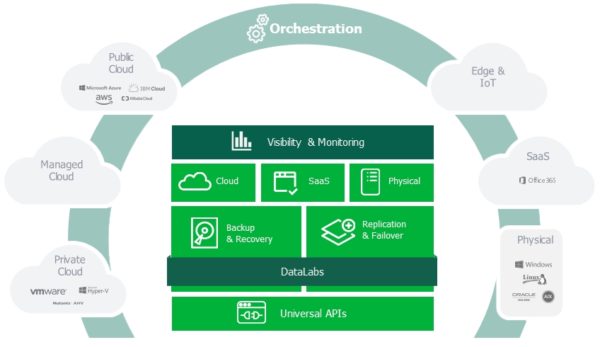VeeamOn Forum 2018
-
Elias Moioli
- 25 Jun, 2018
- 02 Mins read

The VeeamOn Forum 2018 has been an event focused on "intelligent data management for the Hyper-Available Enterprise", intelligent management made-up of these 5 steps:

Phase 1, Backup: Back up all workloads, making sure they are always recoverable in the event of interruptions, attacks, data loss or theft.
Step 2, Aggregation: Ensure data protection and availability in multi-cloud environments to enable digital services and ensure an aggregated view of service-level compliance.
Phase 3, Visibility: Improve data management in multi-cloud environments thanks to unified visibility and control of use, performance and operation; data management begins to transform from reactive to preventive, to avoid losses in terms of availability. Thanks to advanced monitoring features, optimization of resources, capacity planning and integrated intelligence.
Stage 4, Orchestration: Move data within multi-cloud environments without interruption to ensure business continuity, compliance, security and optimal use of resources. This requires an orchestration engine. That allows the company to execute, verify and document disaster recovery projects in a highly automated manner.
Phase 5, Automation: Data is self-managed, learning to duplicate, moving to the best location based on business needs, protecting itself in case of abnormal activity and recovering instantly. This phase ensures new levels of automation for the management of company data through a combination of data analysis, pattern recognition and machine learning.
An interesting topic discussed during the event has been the GDPR application of the "right to be forgotten" law, for which you have to delete all data about a person if requested: a new functionality in Veeam will be released and will let to restore a backup in a kind of "sandbox" disconnected from the production network and manipulate the data (ex: deleting data in a DB using the same workloads used in the running production environment) and then rebuild the backup.
